#Thomas Hutter 2024
Explore tagged Tumblr posts
Text
“Nosferatu” (2024) and the Female Gothic Genre, Paganism and the Occult
The Gothic novel genre is deeply connected with female authors like Ann Radcliffe, Mary Shelley, Brontë sisters, Mary Robinson, and Charlotte Dacre, because it allowed them to explore themes that were “off limits” to women at the time (19th century) especially sexuality and women’s place in a patriarchal society. Hence the “Gothic female” genre was created, as a way for female authors and readers to digest their mixed feelings about these topics. This is the world Robert Eggers transports his audience in “Nosferatu” (2024).

This film checks every box of the Gothic genre: claustrophobic atmosphere, environment of fear, the threat of the supernatural, ruined buildings (usually from the Medieval ages), dreamlike states, nocturnal landscapes, demonic possession, blend of “high culture” and “low culture” (folklore), superstitious rituals, melancolia, melodrama, decay, fate, the macabre, the intrusion of the past into the present, stories of persecution, imprisonment and murder as metaphors for social conflict.
Indeed, the audience can’t analyze this story through contemporary lenses or bias, because it’s suppose to be an immersive experience into the Gothic genre and the Victorian era. The terms “gothic” and “romantic” exist in their historical context; “gothic” as in the literature genre (gothic novel), and “romantic” as in the 19th century artist movement (Romanticism).
No, this is not a story about grooming nor abuse... it can be, but not in the way many are interpreting it. Folks also need to let go of previous adaptations and their meanings, because this is Robert Eggers take on this story. And, it’s everything a remake (or retelling) should be, because its not a rehash, it’s a new interpretation of a old story, “Dracula”.
Robert Eggers tells us that the themes of sex and death are at the core of his story, it’s a “demon lover story”, and it’s Count Orlok and Ellen psychosexual connection that makes his adaptation different from the rest.
Ellen is our female gothic protagonist, and, like similar characters of the genre, she’s a persecuted heroine fleeing some a villainous outside force, personified by Count Orlok, the archetypal Death. Metaphorically, she’s a young woman haunted by her own mortality, by Death itself. She also has a sense of Doom looming over her, the heavy hand of Fate; can we outrun our destiny? “Providence!” Herr Knock screams throughout the film; as in a supernatural force, commonly God, guiding humanity destiny.

Ellen is no typical young woman, though. As she tells Von Franz, she had occult powers since childhood, being able to perceive glimpses of the future and suffering premonitions (knowing the contents of her Christmas gifts and when her mother would die). Her father called her “his little changeling girl”, as in the European folklore of human children kidnapped by supernatural creatures (fairies, demons, etc.) and a substitute being left in their place. Herr Knock also compares Ellen with a “sylph”, when he informs Thomas he’s to travel to Transylvania. “Sylphs” are air spirits from 16th century Germanic folklore and alchemy, a sort of nymph connected to air element in hermetic literature; throughout the centuries they have been culturally associated with fairies, too. We have two characters in the story connecting Ellen with a fairy-like creature. Interestingly enough we, the audience, see her floating in the opening scene.

“You are not for the living. You are not for human kind”, Orlok tells her, and calls her “enchantress”. Von Franz also said Ellen could have been a priestess of Isis had she been born in pagan times. Isis is one of the major Egyptian deities, considered the goddess of magic and healing. She was also connected with the Dead and funeral rites, since she was the sister-wife of Osiris, ruler of the Underworld. Pagan priestesses also entered trancelike states as Ellen “hysterical seizures” or “epilepsies” when communicating with the spiritual world, which is what Von Franz, the occult and alchemist student, recognizes in her. Ellen is a supernatural force, too.
Eggers Orlok was a sorcerer in life, a practitioner of Black Magic. He was one of the Solomonari, wizards from Romanian folklore, believed to be students of the Devil, who learned to ride dragons, and control beasts and the weather. In Eastern European tradition, the Solomonari were believed to be recruited among common folk and disguise themselves as beggars, Orlok is a Romanian nobleman who sought to achieve immortality, to conquer Death. As the abbess tells Thomas, the Devil preserved Orlok’s soul that his corpse may walk again in blasphemy, as a vampire feeding off the blood of the living and spreading plague.

However: who was it who awoke Orlok in “Nosferatu”? The Devil or Ellen?
At the prologue, we see Ellen crying and begging for companionship. She prays for a guardian angel, a spirit of comfort, a spirit of any celestial sphere, anything, to hear her call and come to her. She’s summoning some occult force and inviting it into her life. Orlok answers her call. And why is she doing this? She feels lonely, isolated and misunderstood by those around her. As she tells Von Franz, she’s no longer her father’s “little girl” and he recoils from her touch, because she’s no longer a child. As she grows older and enters womanhood, she starts to feel ostracized and put aside by 19th century society who has rigid gender expectations of her.

According to Orlok, it was Ellen who awoke him: “O’er centuries, a loathsome beast I lay within the darkest pit… ‘til you did wake me, enchantress, and stirred me from my grave. You are my affliction.” Which Ellen later confirms to Thomas: “I have brought this evil upon us” because she sought companionship and tenderness. This is a belief Von Franz also shares: it’s Ellen who “wills it”, and she’s the one who unleashed this plague upon the world.

This is very fitting with the Gothic female novel, where the supernatural connects with female societal status of this time period, generally women’s discontent with patriarchal society, difficult and unsatisfying maternal position (in “Nosferatu” we see this with Anne’s character, where she equals being pregnant with being drained of her life force) and their role within society (fear of entrapment in the domestic sphere, their bodies, marriage, childbirth, etc.).
Eggers’ Orlok is a combination of several Romanian folklore creatures, associated with vampirism: strigoi, moroi (these two are the “classic” vampires) and zburător (a ghost-like creature, usually handsome, and only visible to young women, attacks at night, usually newly-wed ladies and does “indecent” things with them). The influence of this legend in Ellen and Orlok story is evident.
Ellen tries to summon a spiritual companion in her teenage years, most likely when she reached puberty and her sexuality was starting to awake. A demon who’s a personification of appetite, devourance, sex and death is the one who answers her calling. They end up in a sexual spiritual connection, as Ellen experiences her sexual awakening with him, as shown in the prologue and later confirmed how Orlok took her as his lover. She also reveals to Thomas it was “sweet” and she “had never known such bliss” at first, until it turned into torture (seizures and nightmares), when her father found her laying unclothed and called her a sinner and it’s implied she might have been institutionalized, as she tells Von Franz. This episode might be a metaphor for masturbation and the historical shame associated with it. Hence her connection with Orlok being her “melancholy” (depression) and her “shame”, symbolic for the sexual urges 19th century society forced women to repress.
Count Orlok is the archetypal Death; which culminates with the “Death and the Maiden” motif at the end. This was a very popular Art History archetype around the so-called “Plague years” (14th to 16th century) in Europe, and it’s often connected with other motifs like “Danse Macabre” and “Memento Mori”. It has several meanings depending on the author intent, usually a reminder of our mortality, but also a meditation on sex and death, as in the French “la petite mort” (“little death”), the post-orgasm sensation, sexual release potentially causing temporary loss of consciousness (fainting) or dizziness. In the Medieval Ages, physicians believed orgasms could lead to death because they drained the “life force” from the body. This was when the term “petite mort” was created, and this belief persisted into the Renaissance and beyond. In “Nosferatu” this probably translates in the sexual pleasure that Orlok imprints on his victims as he drains their life force.
Ellen’s “hysterical seizures” miraculously stop once she meets and marries Thomas Hutter, our tragic romantic hero. This can also be a nod to Gothic Bildungsroman (“coming of age”) genre; where the female protagonists grow from adolescence to adulthood in the face of the impossibility of the supernatural, and come to the conclusion there’s a rational explanation. In Ellen’s case, it’s medical, as she’s diagnosed as a melancholic somnambulist hysteric (in another words, a depressive hyper-sexual sleepwalker).
At the beginning of the story, Ellen and Thomas are newly-weds fresh out of their honeymoon, which means sex (historically necessary to consummate marriages). With Thomas, Ellen is “free of her shame”, as she says so herself. Because, her sexuality is safely contained within marriage, as it’s socially acceptable. But Thomas dismisses her concerns about his well-being, and doesn’t believe her until he experiences the supernatural first-hand, having an homoerotic encounter with Orlok himself, which also causes him great shame. This is probably a Easter egg for Bram Stoker possible closet homosexuality and “Dracula” being a metaphor for that.

Thomas’ main concern, throughout the story, is to fit into the patriarchal ideal of his genre, as a provider for his wife, and he aspires to be like his long-time friend, Friedrich Harding, the “perfect patriarch” with the perfect religious and dutiful wife, Anna, and their precious children. The Hardings are the perfect Victorian family; they are everything society expects them to be. Friedrich even chastises Ellen for her nature, and it’s clear he resents her for what she represents: “otherness” and “deviance” to societal norms.

However, soon enough, Ellen’s seizures return, symbolizing Thomas cannot sexually satisfy her. She’s “too ardent” as Harding calls her. “More! More!” She begs Thomas when they have sex to scorn Orlok. Not only her sexuality is too strong, but Thomas also shares with Friedrich his desire to wait to have children with Ellen because he wants to gain financial stability first. This in a time period when contraceptives weren’t widely spread, meaning abstinence.
Symbolically, Ellen’s seizures can also be connected with her fear of childbirth. Her “epilepsies” return while she’s staying in the Harding household, where they are children and Anna is pregnant. Children is what is expected of Ellen next, after all. But it’s sexual pleasure that Ellen seeks, and this causes her great shame and torment, because 19th century women weren’t suppose to known “such things”. “Sin! Sin! Sin!” as Ellen’s father screamed at her when he found her naked.

Fear of entrapment represented as Ellen tries to rip off her corset and “free herself”: this happens during one of her Orlok induced seizures.
As Robert Eggers tells us, Orlok both disgusts and attracts Ellen, she loves and hates him at the same time. He’s repulsive, rotten, animalistic and lustful, both literally and metaphorically. His character design is meant to invoke contradictory feelings in the audience: overall he’s foul and monstrous, but he appears almost handsome in some shots. This is intentional. Not only he’s a personification of Death, but of Ellen’s repressed sexuality by 19th century society. He represents the monstrous and dangerous female sexuality the Victorian era sought to contain. He’s the transgression and taboo theme in this Gothic story, as well: necrophilia. Which is probably Eggers “gotcha” moment to “vampire lovers” everywhere, as he forces his audience to confront their own bias.

Ellen herself is a medicalized character, as we see her being institutionalized, drugged, bound to her bed, forced to wear a corset to bed, and used as a scientific experiment by physicians. She’s not in control of her own body, and has little agency over it, overall. We see her being contained, literally and metaphorically, too. This is probably meant to symbolize women as a whole in 19th century Western European societies. The “disability of being female” is one major theme in Gothic female novels, after all.

And if Ellen unleashed Orlok unto the world and he’s connected with her what does this mean for this story? The obvious interpretation of the ending it’s Ellen sacrificing herself to save Wisburg from Nosferatu’s curse, like every other adaptation. But this appears to be somewhat disconnected from the overall themes of this particular retelling. Here, it’s Ellen who unleashed the curse, and only her can put an end to it.
We see Ellen summoning Orlok in two occasions: at the beginning and at the end of this tale. At first, she did it unconsciously, she dabbled with the occult and wasn’t aware of what she was inviting into her life. However, does this indicate Ellen has some degree of control over him? Orlok himself says she’s “his affliction”, and they are bound to one another. She’s not only a seer, she’s compared with a priestess of a Goddess associated with funeral rites and with the ability of resurrection and looking after the Dead (Isis). We can almost interpret her as a necromancer.
Here, we can have a different interpretation of Orlok unleashing a plague upon the society who ostracizes Ellen for her nature. Symbolically, he’s her reckoning, her vengeance upon society norms and expectations of gender. He’s the “plague carrier” and brings a “blood plague” transmitted by rats (symbolic of the Black Plague; the medieval ages terrorizing the modern world of science and rationality) upon Wisburg, and the “good Christians” who contain and shame “Pagan” Ellen.

Orlok’s most notorious victims are the Hardings, the perfect patriarchal Christian family model Ellen can never fit into; the patriarch Friedrich, the pregnant Anna and the two children. This also fits the Gothic female genre of the supernatural menace as a metaphor for women’s status in 19th century society. Ellen doesn’t want to be married to a patriarch like Friedrich, she doesn’t express any desire to become pregnant nor have children of her own. Consequently, we see Orlok killing all of these archetypes in the narrative.
Interestingly enough he spares Thomas and saves him for last when he should be his first victim once he arrives at Wisburg, because he’s the husband. However, Thomas is a character Ellen loves and cherishes, as he somewhat accepts her nature and represents her chance at a “normal life”. He’s also determined to save her from Death/Orlok, but is unable to. Symbolically, Ellen chooses death over conforming to gender norms and expectations.

However, we can’t forget Ellen’s supernatural nature, nor her connection with Orlok. She weds Death at the end, she’s no longer terrified of him, and she fulfills their covenant, and her dream premonition of marrying Death: “standing before me, all in black… was… Death. But I was so happy, so very happy. We exchanged vows, we embraced, and when we turned round, everyone was dead. Father… and… everyone. The stench of their bodies was horrible. And - But I never been so happy as that moment… as I held hands with Death.”
A “covenant” is a pact, both a religious and a occultist practice. This is a “blood covenant”, as their flesh becomes one and he drinks from her. “Blood is the life” is a quotation from the Bible, where “blood covenants” are also mentioned, because a “blood covenant” has the power to either destroy or redeem. For instance, Christ’s sacrifice redeemed humanity according to Christians. “Redemption” as Von Franz says, because only Ellen, like Christ, can redeem the habitants of Wisburg. He uses the expression “with Jove’s holy light” before dawn redemption will come to them: “Jove” is Jupiter, the “King of the skies”, and its energy neutralizes Saturn’s, connected with “melancholy” (depression).

However, that’s not what’s happening here, because Orlok is a servant of the Devil, and a literally un-dead “warlock”. So, what is Ellen pledging herself to here, exactly? Her covenant with Orlok has nothing to do with God or Jupiter, for these are forces of good, when Orlok is a force of evil and darkness.
Ellen also fulfills her role as “priestess of Isis” at the end, as she guides the un-dead Orlok to his physical death; like Isis, she resurrected him, and is now taking him into the Underworld with her. Because, like Orlok also told her, she’s “not for the living”, that’s her fate, the destiny she accepts at the end; she’s meant for Death, as Isis for Osiris.
“Our covenant is fulfilled. Your oath re-pledged.” Orlok tells her. But what was Ellen’s oath? We have to look into the prologue scene “You shall be one with me ever-eternally. Do you swear it?” And in the ending “As our spirits are one, so shall be our flesh. You are mine.” They fulfill their pact both in the physical and the spiritual worlds, and both make the ultimate blood sacrifice, by physically dying for “self-renunciation” is essential for blood covenants.
And a deity is always summoned to bless such a pact… but who was blessing this one? Ellen and Orlok indeed, died in the physical world, but are joined in the spiritual world forever, as decreed by their covenant, so where did their spirits go?

They are also surrounded by lilacs, their signature flower throughout the narrative, which symbolizes first love, yes, but also renewal and rebirth. Orlok conquered Death and immortality once before, because the Devil kept his soul. Now that Ellen is joined with him in spirit, what does this mean for her, and for them both?
#nosferatu 2024#Ellen Hutter 2024#friedrich harding#anna harding#Thomas Hutter 2024#Count Orlok 2024#von franz#lily rose depp#bill skargard#bill skarsgård#nicholas hoult#emma corrin#aaron taylor johnson#willem dafoe#ellen x orlok#orlok x ellen#robert eggers
710 notes
·
View notes
Text

It has now been two times Nicholas has been in a vampire movies.
7 notes
·
View notes
Text
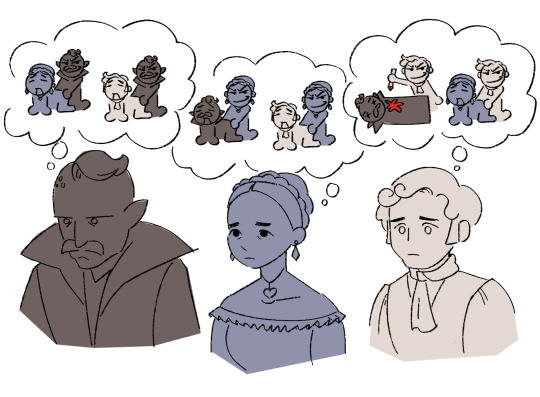
17K notes
·
View notes
Text

TO BE LOVED ENTIRELY 🩸
13K notes
·
View notes
Text

cause the best parts of a vampire besides the fangs are the (tender) hands
print available;
#nosferatu#nosferatu 2024#count orlok#ellen hutter#nosferatu fanart#nosferatu art#robert eggers#lilly rose depp#bill skarsgård#thomas hutter#professor albin#willem dafoe#Anna nosferatu#ellen nosferatu#vampires#vampire aesthetic
17K notes
·
View notes
Text

You are my affliction 🪻
Prints!
#art#artwork#artists on tumblr#fanart#nosferatu#nosferatu 2024#count orlok#orlok#ellen hutter#ellen#nosferatu fanart#digital art#ellen nosferatu#vampire aesthetic#lily rose depp#bill skarsgård#nosferatu art#robert eggers#horror art#thomas hutter#professor albin#this isnt the usual color palette i use but i wanted to go for a more gothic vibe#also lily rose depp was wonderful its too bad her face is extremely hard to draw for some reason LOL#lilacs#nosferatu film#nosferatu 2024 fanart#vampire#vampyr
14K notes
·
View notes
Text

Mous-fer-RATu.
#my art#nosferatu#nosferatu 2024#nosferatu movie#robert eggers#horror#mice#rat#mouse#anthro#gothic#furry art#romantic goth#gothic aesthetic#goth#dark aesthetic#count orlok#ellen hutter#thomas hutter
16K notes
·
View notes
Text
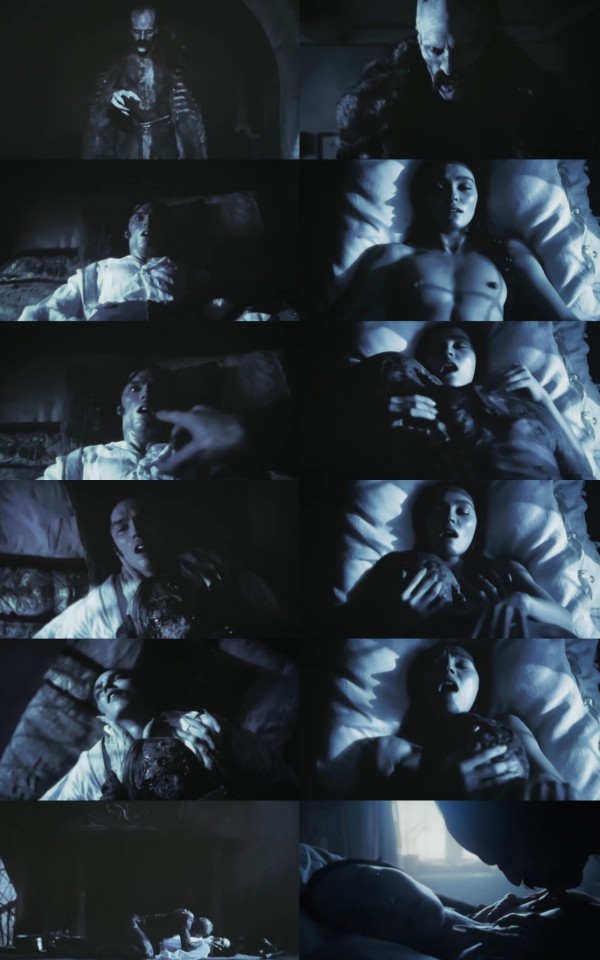
♱ Nosferatu (2024) dir. Robert Eggers ♱
+ bonus


#count orlok feeding on both thomas and ellen in the exact same way#after leading them to bed biting them right over their hearts grinding on them while being naked#thomas hallucinating ellen eerily hovering above him naked with blood on her mouth as if she's the one feeding on him instead of orlok#smarter people than me will probably come up with a proper analysis of this parallel so i'm just leaving this here#i find the way these three are so intertwined with each other so fascinating#nosferatu#nosferatu 2024#nosferatu (2024)#count orlok#ellen hutter#thomas hutter#nosferatu spoilers#nosferatu 2024 spoilers#parallels#cw nudity#my edit
10K notes
·
View notes
Text

#nosferatu#nosferatu 2024#ellen hutter#thomas hutter#count orlok#digital art#meme#robert eggers#vampire
6K notes
·
View notes
Text

dreams growing darker
#love love love these two#nosferatu#ellen hutter#thomas hutter#nosferatu 2024#robert eggers#fanart#art#illustration
8K notes
·
View notes
Text
“A maiden's token I see.”
Robert Eggers’ “Nosferatu” is the only Dracula adaptation that skipped the Mina/Ellen portrait in Dracula/Orlok castle as the vampire recognition of her. Instead, Eggers decided to go with a silver heart locket with a strand of Ellen’s hair and have Orlok acknowledging her because of the scent of lilacs.

And had him doing this, after he kept the locket for himself:

“You are fortunate in your love."
Giving a lock of hair to someone is considered a sign of love and devotion, indeed. But in the Victorian era, it was common to keep locks of hair from deceased loved ones in pieces of jewelry, especially lockets. This is another connection between Ellen and Death (Orlok).
Peak gothic horror romance.
#nosferatu 2024#Thomas Hutter 2024#Ellen Hutter 2024#Robert Eggers#dracula#ellen x orlok#Orlok x Ellen#lilac fang
600 notes
·
View notes
Text
Tumblr Tuesday: Nosferartu
Gothic vampire art, let's go! Nosferatu hit the big screens, and you hit your drawing boards. The art is creepy, dark, and delicious. And there's lots of it!
(this post may contain mild spoilers and mild gore, please proceed with caution if you dislike these things)
@janebroe:

@postnutperfection:
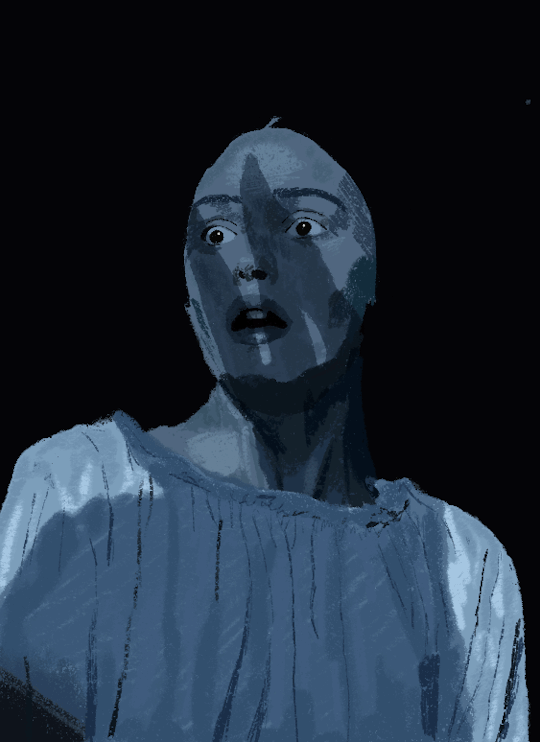
@uhhh-ghouls007:

@meltyimp:
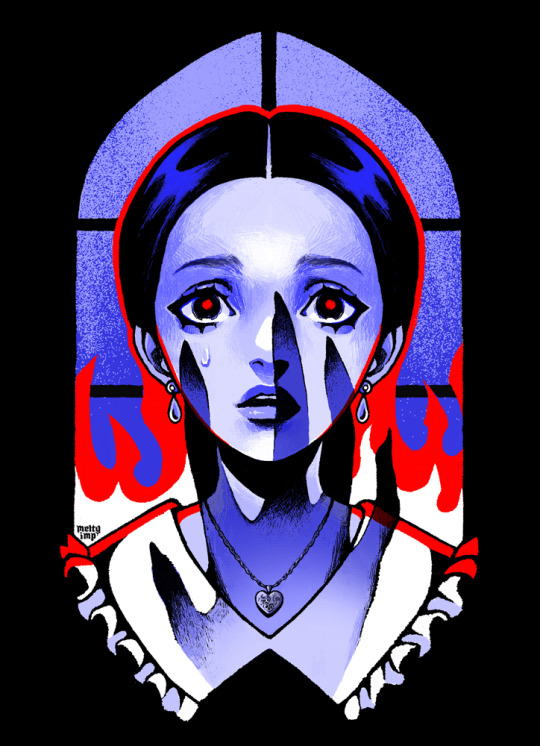
@bajingo:
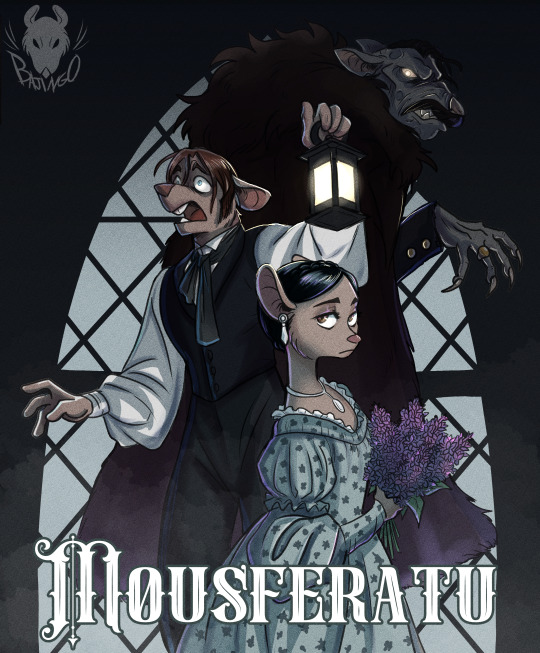
@mirandakat:

@winterofherdiscontent:

@idiotwithanipad:
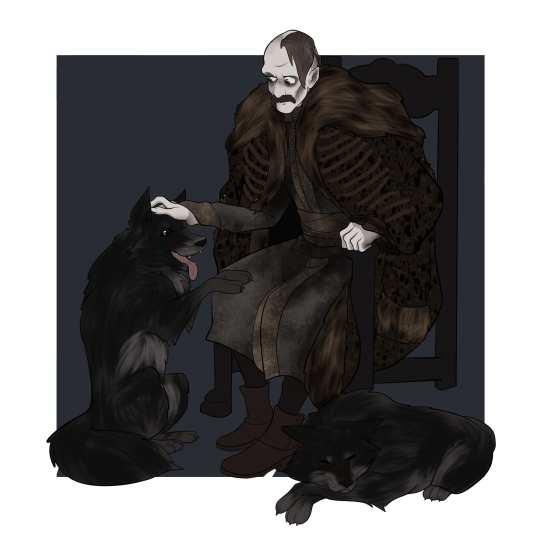
@1nd1gnant:

@nosferaboo:

@siebeobachtetdich:

@mychemicalraymance:
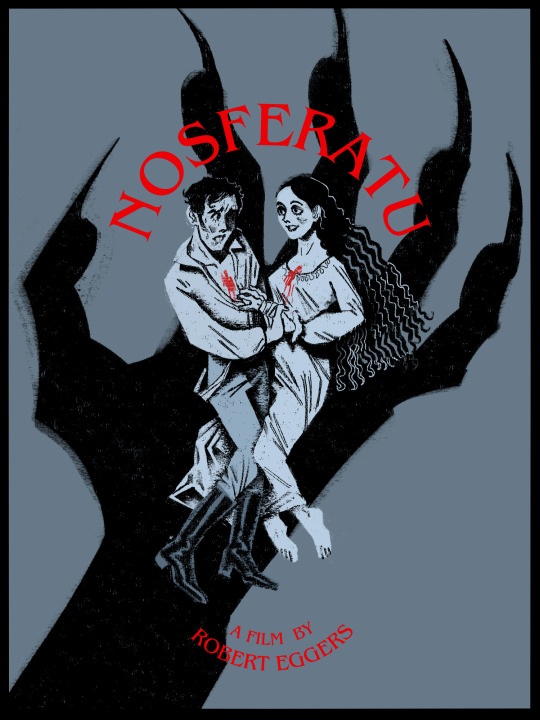
@jbsdrawings:

@fxckingfantasy:

@velisveilka:
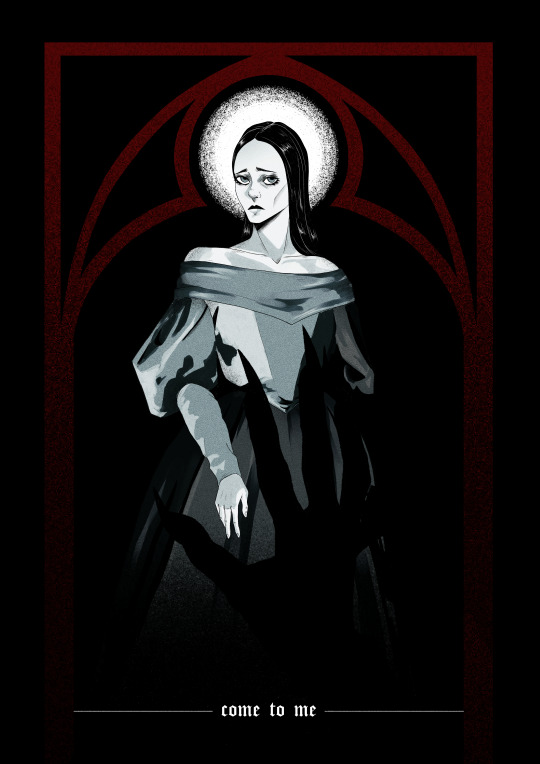
@snail-shell2335:

@tati-and-art:
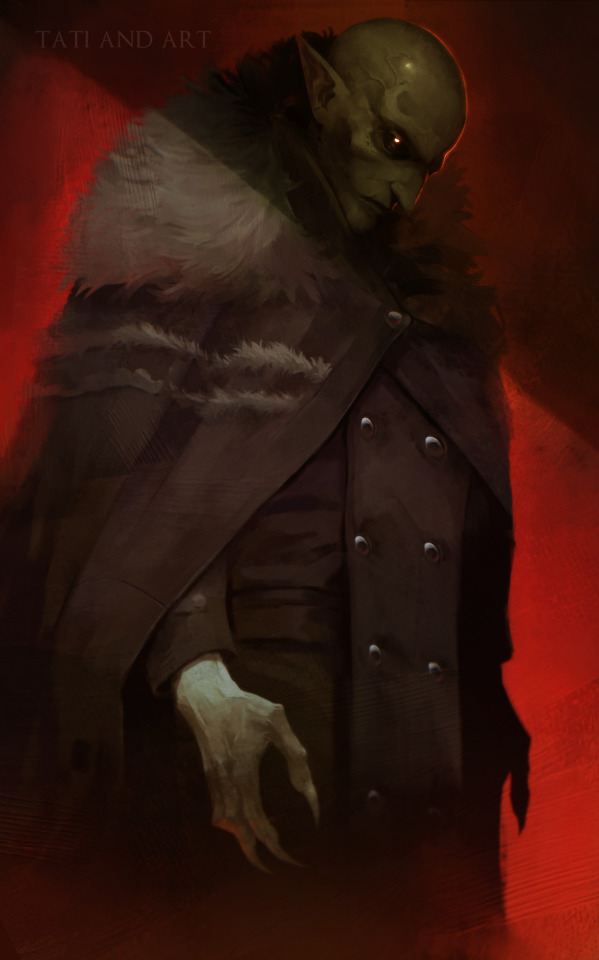
@camiliar:

@setamalvada:

@albertvictoria-art:

@jojoseames:

@hellothisisangle:

@eggos-esper:
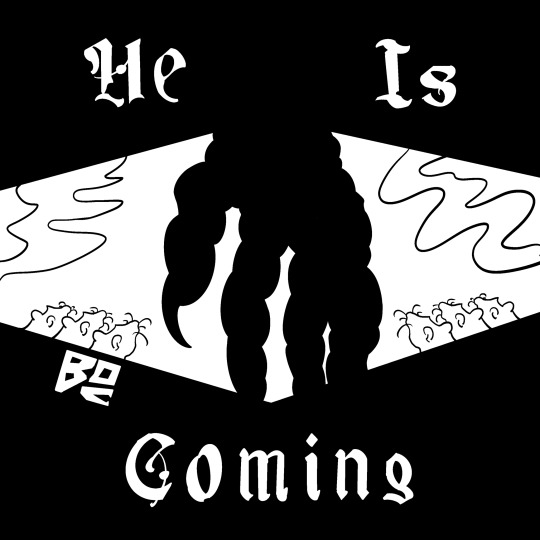
@chrollc:

@aicosu:
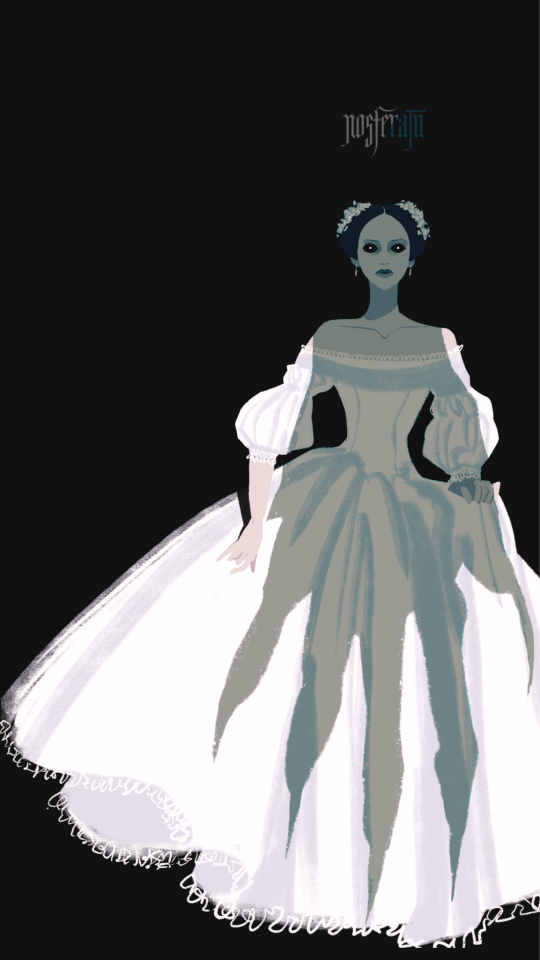
@kikicolors:
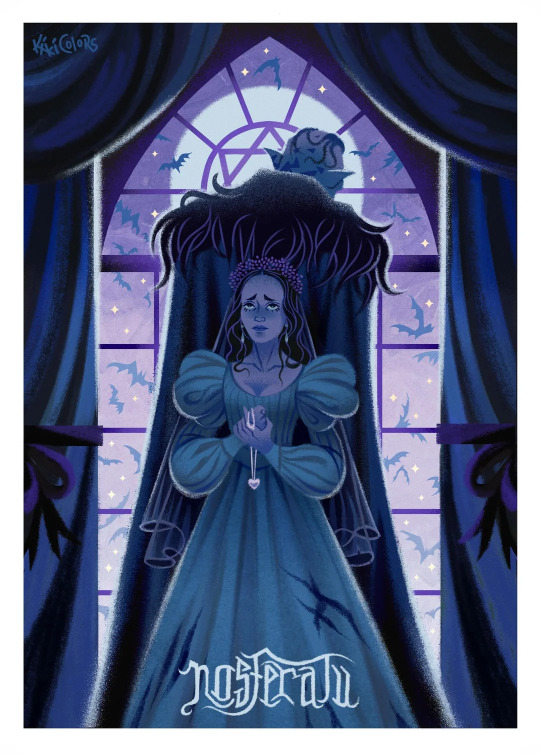
@kpmeat:

@korovaoverlook:

@skullisa:
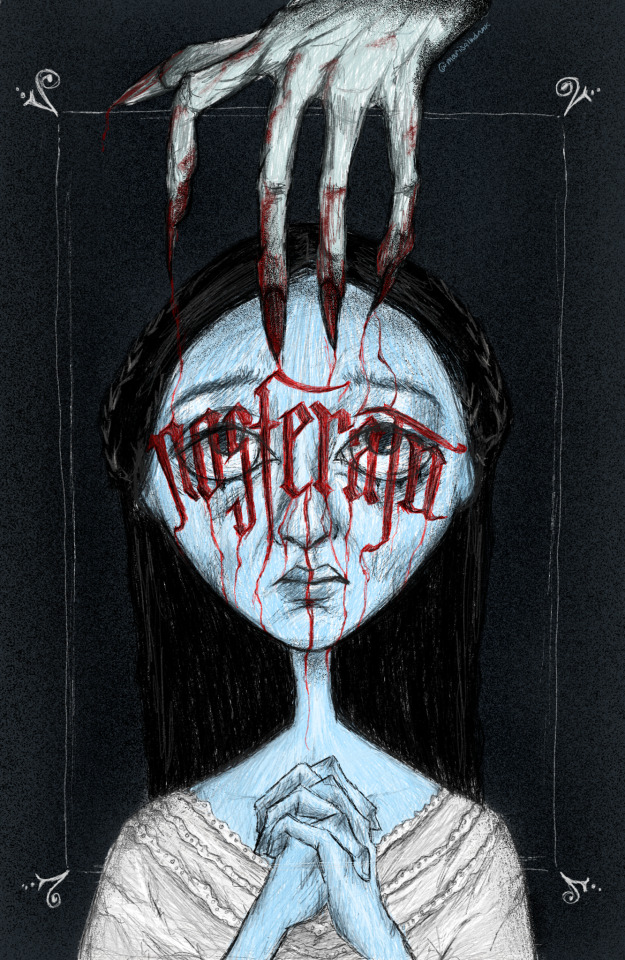
@melonchews:

#tumblr tuesday#nosferartu#artists on tumblr#nosferatu fanart#vampires#count orlok#ellen hutter#thomas hutter#nosferatu spoilers#nosferatu 2024#robert eggers#movies#long post
5K notes
·
View notes
Text




NOSFERATU dir. Robert Eggers
#nosferatu#4th gif is when i literally squirmed in my seat and dug my nails into my sister's arm (painfully)#nosferatu 2024#count orlok#bill skarsgård#thomas hutter#nicholas hoult#horror#dailyflicks#cinemapix#moviegifs#movieedit#filmgifs#nosferatuedit#horrorsource#horroredit#movies#junkfoodcinemas#dailytvfilmgifs#dailyfilmsource#filmtvcentral#filmtvdaily#tuserlivia
5K notes
·
View notes
Text

throuple goals 🩸
9K notes
·
View notes
Text

“But she will rave all night!”
“Then rave she must!”
#nosferatu movie#nosferatu film#nosferatu 2024#nosferatu edit#nosferatu#ellen hutter#thomas hutter#nicholas hoult#lily rose depp#count orlok#bill skarsgård#willem dafoe#horror#horror movies#horror movie#horror film#gothic movies#gothic movie#gothic#macabre#dark#robert eggers#vampire#vampires#vampyre#vampyr#lol#lol memes#meme#albin eberhart von franz
5K notes
·
View notes
Text
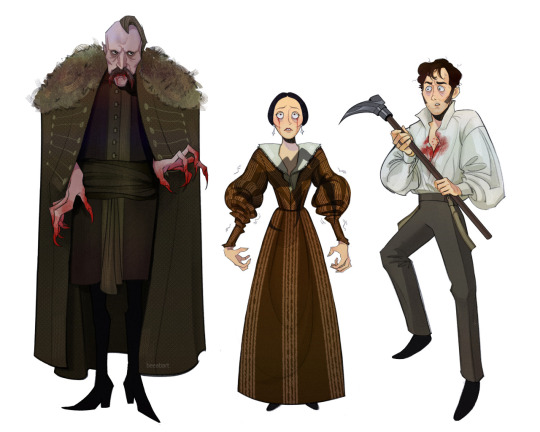
when your circle small but y'all crazy
#nightmare throuple...#nosferatu#nosferatu fanart#count orlok#ellen hutter#thomas hutter#nosferatu 2024#my art#orlok looks sm like eggman i can't stop thinking about it
5K notes
·
View notes